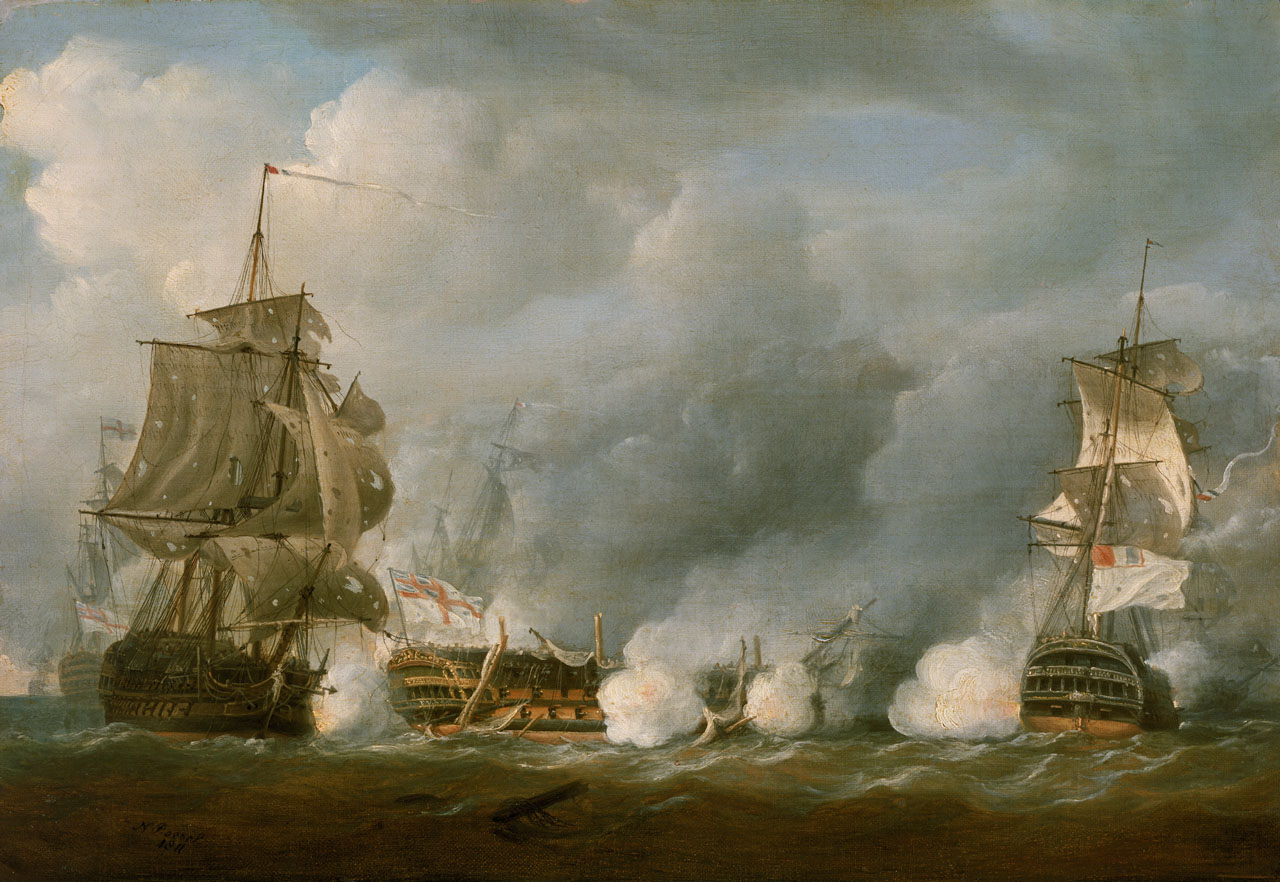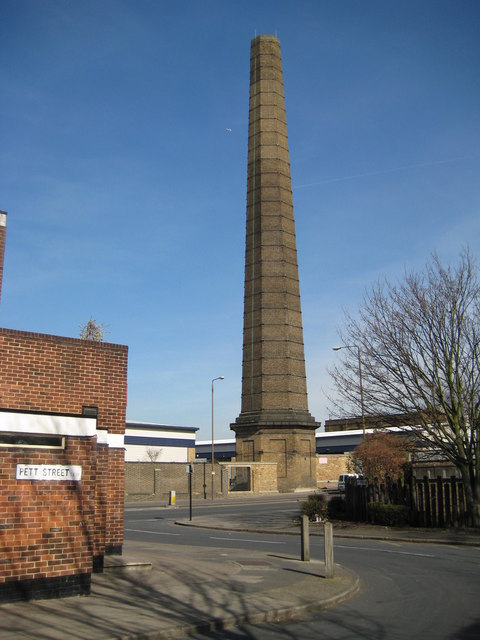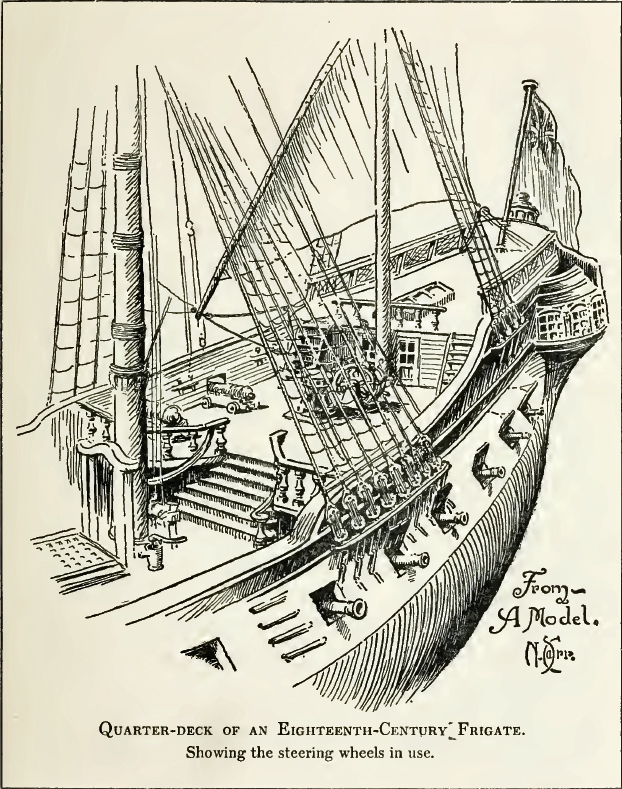|
HMS Princess Amelia (1757)
HMS ''Princess Amelia'' was an 80-gun third rate ship of the line of the Royal Navy, designed by Sir Joseph Allin and built at Woolwich Dockyard by Israel Pownoll to the draught specified by the 1745 Establishment, and launched on 7 March 1757. History She participated in the 1781 Battle of Dogger Bank under the command of Captain Macartney with reduced masts and guns. In June 1773 the Amelia sailed to Florida and then Newfoundland before returning to England in August 1773. During the voyage, Cuthbert Collingwood Vice Admiral Cuthbert Collingwood, 1st Baron Collingwood (26 September 1748 – 7 March 1810) was an admiral of the Royal Navy. Collingwood was born in Newcastle upon Tyne and later lived in Morpeth, Northumberland. He entered the Royal Navy at ... served as midshipman onboard. ''Princess Amelia'' was lent to the Board of Customs in November 1788, and thereby deleted from the Navy List. She arrived at Sheerness on 24 March 1818 from Stangate Creek. The Adm ... [...More Info...] [...Related Items...] OR: [Wikipedia] [Google] [Baidu] |
Battle Of Dogger Bank (1781)
The Battle of Dogger Bank was a naval battle that took place on 5 August 1781 during the Fourth Anglo-Dutch War, contemporaneously related to the American Revolutionary War, in the North Sea. It was a bloody encounter between a British squadron under Vice Admiral Sir Hyde Parker and a Dutch squadron under Vice Admiral Johan Zoutman, both of which were escorting convoys. Background In December 1780, Great Britain declared war on the Dutch Republic, drawing it militarily into the American War of Independence. The Dutch had for several years been supplying the Americans and shipping French supplies to the Americans in support of the American war effort, the reason behind the British declaration of war. The opening of hostilities with the Dutch meant that Britain's trade with countries on the Baltic Sea—where key supplies of lumber for naval construction were purchased—was potentially at risk, and that the British had to increase protection of their shipping in the ... [...More Info...] [...Related Items...] OR: [Wikipedia] [Google] [Baidu] |
Joseph Allin
Joseph Allin was an 18th-century shipbuilder to the Royal Navy. His works merge with those of his namesake son who was also a Master Shipwright at Portsmouth Dockyard and later Surveyor to the Navy at which point he became Sir Joseph Allin. Joseph Allin the elder, first appears as "Assistant Master Shipwright" in Portsmouth in December 1700 as assistant to Elias Waffe. Typically this position followed at least seven years on a ship training and a further period serving as a ship's carpenter, bringing his probable age to around 30. As his son was born around 1690 it may be assumed that Joseph Allin the elder was born around 1670. From 1701 to 1705 he served as Master Shipwright at Sheerness Dockyard and also dis some work overseeing Woolwich before settling as Master Shipwright of Deptford Dockyard in November 1705. Joseph Allin the elder died in 1716. His son had a parallel career but as Master Shipwright of different yards: Portsmouth 1726 to 1742 (in place of John Naish) ... [...More Info...] [...Related Items...] OR: [Wikipedia] [Google] [Baidu] |
Board Of Customs
HM Customs (His or Her Majesty's Customs) was the national Customs service of England (and then of Great Britain from 1707, the United Kingdom from 1801) until a merger with the Department of Excise in 1909. The phrase 'HM Customs', in use since the Middle Ages, referred both to the customs dues themselves and to the office of state established for their collection, assessment and administration. The payment of customs duty (i.e. a levy on imported or exported goods) has been recorded in Britain for well over a thousand years. A centralised system for their collection has been in place since the 13th century, overseen since the 17th century by a Board of Commissioners (the Board of Customs). In 1909, HM Customs was merged with the Excise department (responsible for raising revenue from inland taxes) to create HM Customs and Excise (HMCE), responsible for all forms of indirect taxation. Just under a century later, HMCE was itself merged with the Inland Revenue (responsible f ... [...More Info...] [...Related Items...] OR: [Wikipedia] [Google] [Baidu] |
Cuthbert Collingwood, 1st Baron Collingwood
Vice Admiral Cuthbert Collingwood, 1st Baron Collingwood (26 September 1748 – 7 March 1810) was an admiral of the Royal Navy. Collingwood was born in Newcastle upon Tyne and later lived in Morpeth, Northumberland. He entered the Royal Navy at a young age, eventually rising from midshipman to lieutenant in the American Revolutionary War, where he saw action at the Battle of Bunker Hill during which he led a naval brigade. In the 1780s and 1790s Collingwood would participate in the French Revolutionary Wars, during which time he captained several ships and reached the rank of Post Captain. He took part in several key naval battles of the time, including the Glorious First of June and the Battle of Cape St Vincent. In 1799, he was promoted to rear-admiral and later vice-admiral, where he undertook a variety of command roles during the Napoleonic Wars, including serving as second in command of the British Fleet under Nelson at the Battle of Trafalgar. Following Nelson's death, C ... [...More Info...] [...Related Items...] OR: [Wikipedia] [Google] [Baidu] |
Newfoundland
Newfoundland and Labrador is the easternmost province of Canada, in the country's Atlantic region. The province comprises the island of Newfoundland and the continental region of Labrador, having a total size of . As of 2025 the population of Newfoundland and Labrador was estimated to be 545,579. The island of Newfoundland (and its smaller neighbouring islands) is home to around 94 per cent of the province's population, with more than half residing in the Avalon Peninsula. Labrador has a land border with both the province of Quebec, as well as a short border with the territory of Nunavut on Killiniq Island. The French overseas collectivity of Saint Pierre and Miquelon lies about west of the Burin Peninsula. According to the 2016 census, 97.0% of residents reported English as their native language, making Newfoundland and Labrador Canada's most linguistically homogeneous province. Much of the population is descended from English and Irish settlers, with the majority ... [...More Info...] [...Related Items...] OR: [Wikipedia] [Google] [Baidu] |
Florida
Florida ( ; ) is a U.S. state, state in the Southeastern United States, Southeastern region of the United States. It borders the Gulf of Mexico to the west, Alabama to the northwest, Georgia (U.S. state), Georgia to the north, the Atlantic Ocean to the east, the Straits of Florida to the south, and The Bahamas to the southeast. About two-thirds of Florida occupies a peninsula between the Gulf of Mexico and the Atlantic Ocean. It has the List of U.S. states by coastline, longest coastline in the contiguous United States, spanning approximately , not including its many barrier islands. It is the only state that borders both the Gulf of Mexico and the Atlantic Ocean. With a population of over 23 million, it is the List of U.S. states and territories by population, third-most populous state in the United States and ranks List of states and territories of the United States by population density, seventh in population density as of 2020. Florida spans , ranking List of U.S. states ... [...More Info...] [...Related Items...] OR: [Wikipedia] [Google] [Baidu] |
Israel Pownoll
Israel Pownoll ( – April 1779) was an English shipwright who worked for the Royal Navy. History In 1741, he was Foreman and Master Mastmaker of Deptford Dockyard. In March 1743 he was appointed Master Caulker. In 1752 he moved to Portsmouth Dockyard as Assistant Shipwright but was only briefly there before moving to the same role at Chatham Dockyard. In May 1755 he became Master Shipwright at Sheerness and in December 1755 moved to Woolwich Dockyard and from then the Navy lists his works. In May 1772 he took over Plymouth Dockyard and in February 1775 became Master of the Navy's main yard at Chatham Dockyard. He died at Chatham in April 1779. His will was read on 8 May and is now held at the National Archive at Kew. Ships built *HMS ''Plymouth'' (1755) 8-gun yacht launched at Plymouth Dockyard * HMS ''Coventry'' (1757) launched at Chatham * HMS ''Princess Amelia'' (1757) 80-gun ship of the line launched at Woolwich * HMS ''Boreas'' (1757) 28-gun frigate launched at Woolw ... [...More Info...] [...Related Items...] OR: [Wikipedia] [Google] [Baidu] |
Woolwich Dockyard
Woolwich Dockyard (formally H.M. Dockyard, Woolwich, also known as The King's Yard, Woolwich) was an English Royal Navy Dockyard, naval dockyard along the river Thames at Woolwich - originally in north-west Kent, now in southeast London - where many ships were built from the early 16th century until the late 19th century. William Camden called it 'the Mother Dock of all England'. By virtue of the size and quantity of vessels built there, Woolwich Dockyard is described as having been 'among the most important shipyards of seventeenth-century Europe'. During the Age of Sail, the yard continued to be used for shipbuilding and repair work more or less consistently; in the 1830s a specialist factory within the dockyard oversaw the introduction of Steamship, steam power for ships of the Royal Navy. At its largest extent it filled a 56-acre site north of Woolwich Church Street, between Warspite Road and New Ferry Approach; 19th-century naval vessels were fast outgrowing the yard, howe ... [...More Info...] [...Related Items...] OR: [Wikipedia] [Google] [Baidu] |
Royal Navy
The Royal Navy (RN) is the naval warfare force of the United Kingdom. It is a component of His Majesty's Naval Service, and its officers hold their commissions from the King of the United Kingdom, King. Although warships were used by Kingdom of England, English and Kingdom of Scotland, Scottish kings from the early Middle Ages, medieval period, the first major maritime engagements were fought in the Hundred Years' War against Kingdom of France, France. The modern Royal Navy traces its origins to the English Navy of the early 16th century; the oldest of the British Armed Forces, UK's armed services, it is consequently known as the Senior Service. From the early 18th century until the World War II, Second World War, it was the world's most powerful navy. The Royal Navy played a key part in establishing and defending the British Empire, and four Imperial fortress colonies and a string of imperial bases and coaling stations secured the Royal Navy's ability to assert naval superior ... [...More Info...] [...Related Items...] OR: [Wikipedia] [Google] [Baidu] |
1745 Establishment
The 1745 Establishment was the third and final formal establishment of dimensions for ships to be built for the Royal Navy. It completely superseded the previous 1719 Establishment, which had subsequently been modified in 1733 and again in 1741 (but not formally replaced on either occasion). Although partially intended to correct the problems of the ships built to the earlier Establishments, the ships of the 1745 Establishment proved just as unsatisfactory, and important changes in the make-up of the Admiralty and Navy Boards finally led to the end of the establishment era by around 1751.Lavery, The Ship of the Line - Volume 1, p 86–97. Origins When the 1706 Establishment had come into effect, British naval architecture had been set on a path of conservatism that caused stagnation in the advance of shipbuilding in Great Britain. Over the course of the existence of the 1706 and 1719 Establishments, the sizes of ships had remained relatively unchanged: the gundeck length of ... [...More Info...] [...Related Items...] OR: [Wikipedia] [Google] [Baidu] |
Forecastle
The forecastle ( ; contracted as fo'c'sle or fo'c's'le) is the upper deck (ship), deck of a sailing ship forward of the foremast, or, historically, the forward part of a ship with the sailors' living quarters. Related to the latter meaning is the phrase "Wiktionary:before the mast, before the mast" which denotes anything related to ordinary sailors, as opposed to a ship's officers. History and design In medieval shipbuilding, a ship of war was usually equipped with a tall, multi-deck castle-like structure in the bow (ship), bow of the ship. It served as a platform for archers to shoot down on enemy ships, or as a defensive stronghold if the ship were boarded. A similar but usually much larger structure, called the aftcastle, was at the aft end of the ship, often stretching all the way from the main Mast (sailing), mast to the stern. Having such tall upper works on the ship was detrimental to sailing performance. As cannons were introduced and gunfire replaced boarding as th ... [...More Info...] [...Related Items...] OR: [Wikipedia] [Google] [Baidu] |
Quarterdeck
The quarterdeck is a raised deck behind the main mast of a sailing ship. Traditionally it was where the captain commanded his vessel and where the ship's colours were kept. This led to its use as the main ceremonial and reception area on board, and the word is still used to refer to such an area on a ship or even in naval establishments on land. Many such facilities have areas decorated like shipboard quarterdecks. In the 20th century the word came to be applied to the area at the stern of the ship, often (on naval vessels) used for secondary weapons and (on battleships) seaplane catapults. Ceremonial use There are ancient traditions of offering special deference to the quarterdeck. Greek, Roman, and Carthaginian warships all carried shrines which were given special respect. This continued into Christian times, and in medieval British warships, the religious shrine was set up on the quarterdeck. All hands were required to salute it by taking off their hats or caps. This le ... [...More Info...] [...Related Items...] OR: [Wikipedia] [Google] [Baidu] |







